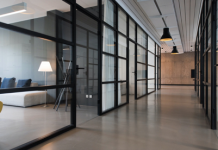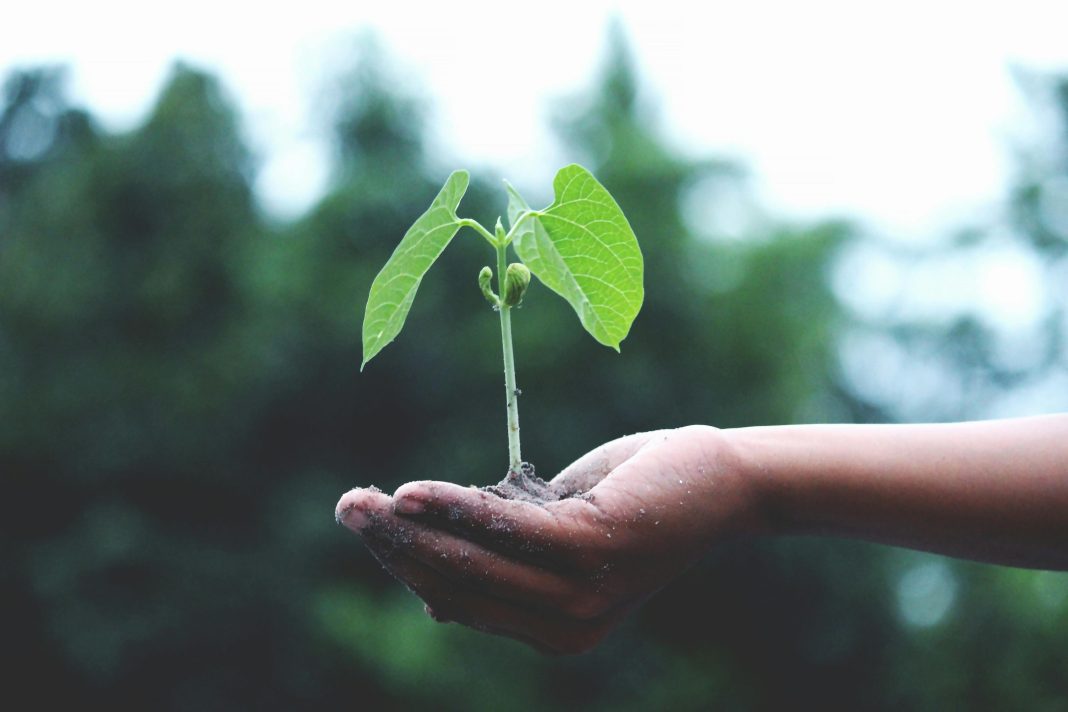As the world develops environmental problems, people become more ecologically conscious and aware of their actions. Sustainable living is a trend that is taking over worldwide. People are getting on board and switching to a sustainable lifestyle, from recycling and reusing to choosing eco-friendly products.
Sustainable living limits how much an individual or society uses the planet’s natural resources. It aims to balance maintaining and sustaining natural resources, habitats, and biodiversity with human society. Green living is another name for this type of lifestyle, and it is also frequently referred to as “net zero living” or “earth harmony living.”
Green Buildings and Their Features
Besides green living, green buildings also exist. A “green” building minimizes or eliminates harmful effects on the natural environment during its design, construction, and operation. Green structures protect priceless natural resources, raise our standard of living, and have other positive effects.
A green building, whether a home, school, workspace, or hospital, consists of the following characteristics:
- Uses sustainable and non-toxic materials
- A layout that allows for environment adaption
- Uses solar and other renewable forms of energy
- Takes the environment and occupants’ quality of life into account during design, construction, and operation
- Excellent indoor environmental air quality
- Supports recycling, reuse, and waste and pollution reduction measures
These characteristics may vary depending on the location, climatic conditions, traditions and cultural practices, economic priorities, and building types.
8 Benefits of Green Building
There are many advantages to having a green building. Besides being friendly and helpful to the environment, it also comes with gains for those who occupy the space.
Healthier indoor environment
Modern green buildings have better lighting, temperature conditions, ergonomic features, and enhanced air quality. These interior design components contribute to better health. People who live or work in green structures often notice an improvement in their general well-being, stress levels, and quality of life.
Prevents medical conditions
Materials with dangerous, volatile organic compounds (VOCs) or plastic by-products typically leak hazardous gasses and carcinogens into the atmosphere. These harmful substances can trigger allergies, asthma, respiratory conditions, and other medical conditions, in some cases, a higher chance of developing cancer.
Since green buildings do not have these, occupants are spared from such ailments.
Energy-efficient
Structures that use renewable energy from the sun, wind, and water benefit the environment since they shield the ecosystem from pollutants that non-renewable sources like coal and oil cause. Unlike non-renewable sources, green structures are built with non-toxic material, reducing maintenance and operating costs throughout the infrastructure’s lifetime.
Sustainable material with lasting impact
Eco-friendly engineers, architects, and designers use resources like recycled material and refurbished old buildings to lessen carbon footprints and save natural resources. Not only does this practice have minimal use, but it also has maximum impact. Green buildings are durable, reduce waste, and maximize our energy and resources.
Water efficiency
Water-saving plumbing fittings can help green buildings reduce water wastage while easing the burden on shared water supplies. It has specially designed equipment to purify the water, allowing residents to recycle more or take advantage of alternative water sources, such as rain.
These innovations protect future access to clean water supplies and save this essential natural resource.
Cut expenses
Green buildings will typically have lower maintenance expenses since they’re built with architectural elements that cut energy consumption and aid in lowering each occupant’s energy and water bills.
Although the initial cost to construct such structures may be greater than conventional buildings, the investment returns over time. Corporate and residential owners can save tons of money in the long run because of these efficient structures.
Less carbon footprint
The Environmental Protection Agency (EPA) mentions that buildings are responsible for roughly 30% of all greenhouse gas emissions in the US. Green structures are designed to reduce a property’s carbon footprint, which is great for building owners who want to join the movement to save the planet.
More durable
Sustainable materials endure longer, from water and energy savings to enhanced air quality and general durability. Green building materials like recycled decking and roofing last many years and require much less upkeep. Additionally, many are healthier for the environment and its occupants because they lack damaging or toxic chemical treatments.
15 Projects to Make Your Home More Sustainable
Only some have the budget to develop an entirely new eco-friendly building, but you can do something to help the environment. There are numerous projects to make a home environmentally friendly and safe for its residents.
Install solar panels
A solar panel consists of solar or photovoltaic cells that can produce power through the photovoltaic effect. While this sustainable energy source powers a space with electricity, it produces fewer carbon emissions. Not only do you save on bills, but you also reduce harmful effects on the environment. In addition, solar can increase your property value.
Fix up a home garden
Setting up a garden at home is a simple way to go green, but it is even better if you make it into an energy-efficient garden because this minimizes water use.
Go for resilient or hardy plants that do not require frequent watering and use much mulch. Other pro-environmental practices you can follow are collecting and using rainwater to hydrate the plants and planting vegetables and fruits in your garden.
You can also place plants inside your home to improve indoor air quality.
Set up a drip irrigation system
Your home can stay cooler with the proper landscaping, as it acts as a windbreak and produces cleaner air. But greens require maintenance and water. A sustainable house choice that is efficient in water usage is drip irrigation, and it is ideal for those who reside in regions where it is vital to water your landscape.
Drip irrigation allows water to go directly to the roots of plants through systems that use gravity to provide the water. You may reduce water loss due to evaporation and do away with water pumps to lower your electric bills.
Prepare a compost bin
Composting produces a nutrient-rich addition for your plants and prevents trash from going to landfills. A compost bin is a specific container that stores organic waste that decomposes into compost. It is crucial to choose the ideal bin based on your composting requirements. They come in different materials, such as lumber, plastic, stone, and ceramic.
Regardless of what the bin is made of, the most beneficial container is one you can quickly turn and rotate regularly. These compost bins prevent odors and ensure that all the contents break down.
Items for composting include vegetable and fruit peels, nutshells, eggshells, wood shavings or sawdust, coffee grounds, and brown paper products like newspaper and coffee filters.
Recycle and reuse any construction waste
Refrain from throwing out materials that may seem like trash. Instead, you could make the most out of them. Some things, from bricks, metal, and wood to outdated equipment, can be kept for future use, while others can be sold. You do not just make money out of it but also take part in lessening what goes into a landfill.
Improvise drying practices
A dryer may be more convenient, but an eco-friendly alternative is hanging your clothing on a line. The old-fashioned method of hanging your clothes to dry outside uses less energy. Remove items from the line when they are almost dry. If you miss the softness of drying them in your dryer, place them in the dryer for a few minutes.
If you can’t avoid using a dryer, clean the filter regularly to prevent a fire risk and maintain good energy consumption. You can also try using dryer balls, which separate your clothing as it tumbles, improving ventilation and dryer effectiveness.
Install a cool roof
On a scorching summer afternoon, conventional roofs can reach temperatures of 150°F or higher, but a reflective roof could remain cooler by more than 50°F (28 °C) under the same circumstances.
A cool roof makes all the difference because it reflects more sunlight than a typical roof. This sustainable hack results in less heat transmission, reduced energy consumption, and lower air-conditioning bills.
Clean the coils of the refrigerator
Your refrigerator operates more effectively with regular maintenance. Cleaning the refrigerator’s coils will make it function better and require less power or energy.
Go for eco-paints
Eco-paints produce fewer chemicals in your sustainable home. Since they are less hazardous, they lead to better indoor air quality. At the same time, it reduces health issues related to toxic products.
Invest in the right appliances
Your appliances are among the most energy-hungry items at home. There are two prices to consider when buying appliances: the cost of buying and the operating expense.
Although the most energy-efficient appliances are more expensive, their price is lower. From refrigerators and air conditioners to water heaters and stoves, ensure the appliances you often use are energy efficient.
Use a water filter
Water sometimes contains microplastics, which harm the environment and humans. A water filter can help purify drinking water, remove harmful microplastics, and add a layer of protection for you, your family, and the environment. You can add water filters to washing machines, as well.
Choose natural cleaning products
There is a misconception that cleaning products should be harsh to be tough on dirt, germs, and bacteria. But natural cleaning products can achieve the same results. They may cost more, but they are non-toxic. These products do not add to water, air, or environmental pollution. In addition, it is safer for humans.
Try high-quality windows
Besides cool roofs and solar panels, windows can significantly reduce energy consumption, help soundproof spaces, and protect belongings inside an area. High-performance windows come in special coatings, double glazes, and nonconductive framing materials, which can help make your home more sustainable.
Switch to LED or CFL bulbs
Ditch fluorescent lights and go for better options, such as light-emitting diode (LED) or compact fluorescent lamp (CFL) bulbs. These are more efficient, last longer, and have fewer toxic metals. A simple switch like this adds to sustainability in your space.
Buy recycled products
Purchasing goods from recycled materials benefits the environment by lessening trash and maximizing resources. Doing this practice also increases demand, motivating others to get into the habit of recycling and supporting the circular economy. Having recycled items in your space makes it an eco-friendly place.
A Sustainable Home
An environmentally friendly space starts with adopting green living and incorporates sustainable practices into daily activities. As you follow an eco-friendly lifestyle, you also begin to build a green home. With the projects discussed in this blog post, the way to a sustainable home is clearer and easier.































